Intro
For parents hunkering down with their kids due to the Coronavirus epidemic can take a sigh of relief.According to data from China, children mostly seem to escape the wrath of Coronavirus.
Coronavirus which emerged from Wuhan, China, in December has been declared pandemic. It has spread to more than 60 countries triggering panic world-wide. Dubbed as 2019-nCoV or Covid-19, the virus has claimed people of all ages. Kids aren't any less likely than adults to be exposed to respiratory ailments. However, according to doctors it seems most likely that kids are catching the infection but recovering more easily than their parents and grandparents.
Before we gauge the risk of the virus, let’s have a quick look at the origin and symptoms of coronavirus.(Infographic)
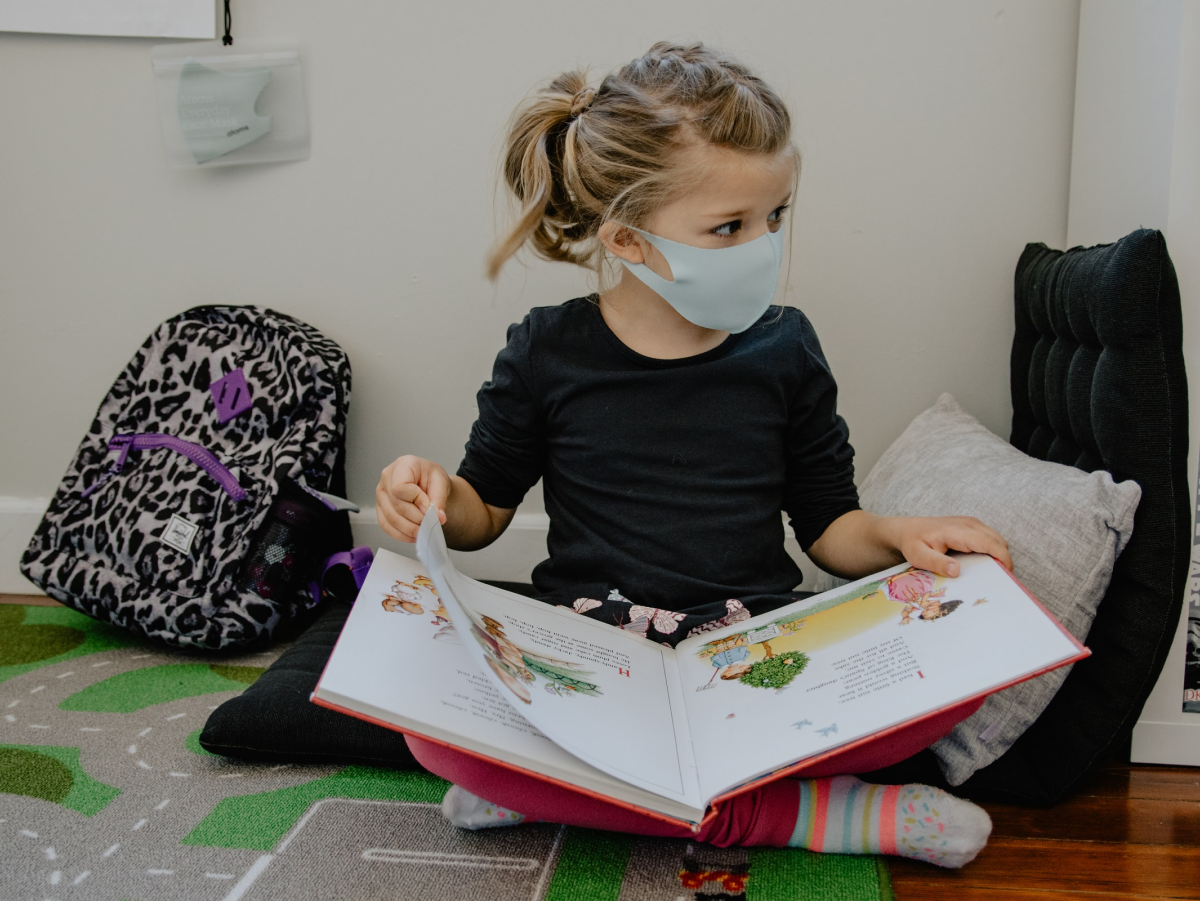
How risky is Corona virus to children?
Children appear to be relatively unaffected by coronavirus. A report by the Journal of the American Medical Association (JAMA) said the median age of patients for the current outbreak is between 49 and 56 years, adding that cases in children “have been rare”.
Due to the rapidly changing information coming out of China and the fact that children with mild symptoms probably won't be tested for the virus, it is hard to know how many kids have contracted the new Coronavirus.
According to an analysis based on 44, 672 confirmed cases of Covid-19 in China, fewer than 2% affected are Children under the age of 19 – and no casualties among those younger than 10.
Probable reasons why kids can make “safe escape” from the epidemic according to health experts
are:
- Kids might have healthier respiratory tracts because they've been exposed to less cigarette smoke and air pollution than adults.
- Kids are healthier in general, with fewer chronic health conditions.
- Kids’ immune systems are so robust, it doesn't lay them out the way it would as an adult. They are able to shake off the infection or have no symptoms or only very mild ones similar to a cold.
In both the SARS outbreak of 2003 and the MERS outbreak of 2012, adults with chronic health conditions were at a higher risk of death than adults without prior health issues. Adults are 25 times more likely to die from chickenpox than children are. And though influenza can be devastating for infants, older children usually make it through with more ease than adults. Seasonal flu death rates among adults are 10 times that of death rates among children.
However, children with underlying respiratoryproblems, such as asthma, may have to be more careful, as the virus could trigger an attack.For most children, though, it will be a respiratory infection like any other and no cause for alarm.
Treatment and vaccination
Even though researchers have developed and have started testing them on animals, one would not be ready until at least the middle of next year. There is currently no specific treatment or vaccine available for coronaviruses but symptoms can be treated.
Until a vaccine is ready what treatments are there?
Follow good hand hygiene and respiratory hygiene.
Are masks effective for young children against viruses?
Although it is advised that those who are sick and have respiratory symptoms like a cough or a runny nose to wear face masks. However, masks are not suitable for infants and younger toddlers below the age of 3. When masks are worn, they increase the resistance against breathing coupled with an increase in the levels of carbon dioxide in the dead space contained behind the mask. This may result in hypoventilation in infants and children below the age of 3 (who have smaller lung capacities) and poorer clearance of carbon dioxide, which can be dangerous.
For children aged 7 – 12, a study on specializedpediatric N95 masks showed that these can be used safely during routine physical activities such as reading in class, walking to school, or catching a bus, without significantly compromising a child’s ability to breathe. Safety of the N95 mask for younger children has not been evaluated and isn’t established as a superior type of mask.
Make sure about two factors when choosing a face mask for young child – fit and comfort. Trying to have your toddler or young child keep a face mask on can be a challenging task. Masks for different age groups and needs are available on market.
School closures
Closure of schools is indeed challenging followed by different views from advice experts. Longer closures may result in more students congregating in places outside the school – friend’s house, shopping malls – which will increase risk to older adults or those at the risk. But if we are serious about flattening the curve then closing schools is the best option at this point of time. Again, keeping a track of who is meeting who, remains of utmost importance.
Currently, many schools are closed world-wide to prevent the spread of the virus.
The bottom line
Not every parent can afford to take work from home, making social distancing easier. Neither can you torture your toddler to use masks. A crying toddler who is uncomfortable and struggling is not likely to have an effective mask on. An uncomfortable child is also more prone to grab and touch their face more, making the spread of infection through mucosal surfaces more likely.
As leading health experts from around the world have come together to fight a common enemy that doesn’t respect borders and ensure that the necessary resources be accumulated, to bring this outbreak to an end.What is least expected of us is to practice basic hygiene etiquettes and avoid prolonged close proximity between family members.
Along with myths making rounds of late, my personal advice is to stay away from fake health advices and follow advisories from health ministry and trusted body like theWHO. So, the bottom line is thatwith hundreds of new cases being reported world-wide each day the best we can do is to follow good hygiene, stay informed and take care of your loved ones like never before. That’s the need of the hour.
How to enhance pre-reading skills of kids

Children take their own pace to read and learn. Before they begin to read, they develop a set of skills known as pre-reading skills. There are different ways in which children learn how to read. They may start going through magazines or books. They may take interest when you read aloud.They may finger point at words and show interest. All you need to do is get the cue.
Some cues can leave you perplexedand you would be caught betweenwhether to celebrate or to shed a tear.I saw my baby patiently flipping through the pagesof my favourite novel and I couldn’t be happier to welcome him to the reading club. But he soon got disappointed by his gibberish (of course) and looked at me whining as if he needed my help. Only within a blink he managed to throw it like a cannonball. Its funny how sometimes parents let go of anything when it comes to their kids.Nevertheless, I got the cue that he wants to read, but not by himself. (By the way, I did order the novel again, however a paperback this time to be on safer side)
Pre-reading skills are signs of early literacy. It’s time you encourage your kids to make reading a habit which would eventually improve communication skills. And if you make it fun then there’s nothing like it.Ever since my kid started showing interest in reading, I have been experimenting with a few simple and imaginative fun activities. Here are some fun activities for pre-readers:
- Read to your child:There is no better way to introduce kids to words and fluency than to read, read and read again to them daily. I prefer bedtime but you can read to them at other quiet times throughout the day. As you read, make sure to make facial expressions and hand movements. Reading loud and clear help them with sounds and pronunciation of words. To engage them little more, sing it to them, changing your voice and accent. Also, use rhyming words. Let your kid coin and use them even if they don’t make sense.
- Use your fingers: Runningyour fingersand following under the words you are reading will help your kids to learn left to right processing of print. It will also help them keep their eyes on track, hence flowing from one word to other. Most, importantly kids will focus on the meaning of the word rather than just move their eyes from one word to other.
- Storytelling with puppets: Any kids are entranced by puppets. Reada story using puppets and bring them alive with a few props.Enacting a story as you read it will leave an early impact. It will also improve kids’ imagination therefore gripping them with reading interests.
- Make an alphabet poster: Cut out pictures from newspapers, booksand magazines that begin with each letters. Stick them on a piece of poster board. Play quiz games asking your kid to point out at different letters. Meanwhile, you can explain him about respective pictures – shape, colour, taste – also show them live examples. For instance, if it is A for apple then give him an apple to touch and feel so that he is able to distinguish it from B for banana.
- Label common objects:From his toys to the pots in your garden, label all the common things that catch kids’ attention everyday.Make two sets, attaching one to the items and other for your kid to play. The idea is to get the child familiar with the look of the words for common items, eventually making the connection on his own. It won’t be long before your child starts showing you that he recognizes his words from seeing them around the house.
- Listen to audiobooks:This comes handy while you are multi-tasking. Tune in to a streaming service and engage your kid with new stories and new voices. You can also checkout audiobooks from the library for free.
- Learn from environmental print: Have you noticed how kids even without able to read, can recognize signs, logos, symbols and words that children see every day. Let your child make her own book of environmental print. Provide newspapers, magazines, safety scissors, glue, and a bundle of blank paper stapled together. She can cut out familiar logos and symbols, paste one on each page, and read you her book.
If we continue to help kids with pre-reading skills, they can expand their vocabulary even before they start school. Don’t push your kids into any of these activities, neither panic in case others are better at it. Keep finding your own creative ways to enhance their pre-reading skills.
Gardening with kids
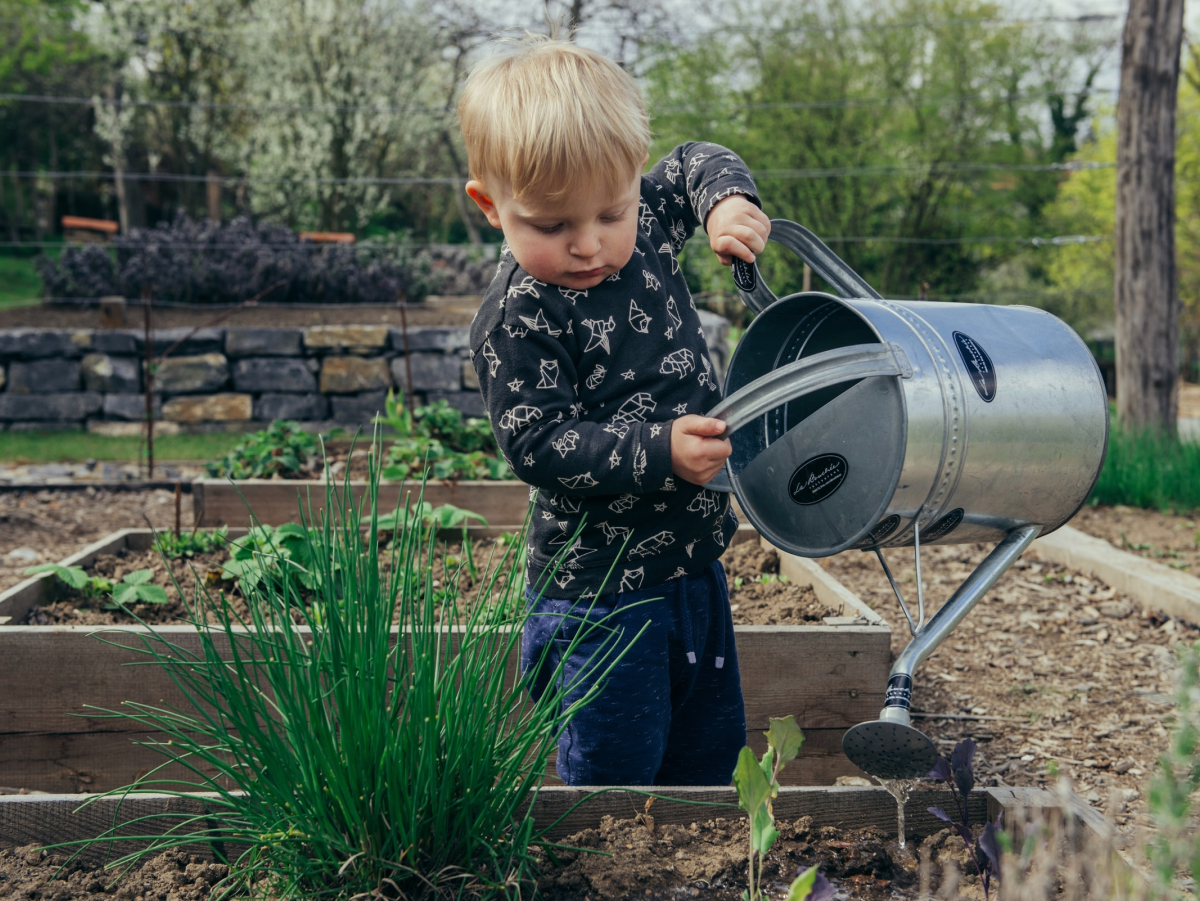
And one day my kid finally asked me where we get our vegetables from. That’s how our gardening venture kicked off which my kid and I are very proud of.
It’s important for children to understand where their fresh food which they see only in supermarkets actually come from. By seeing themgrown in their home gardens gives them a good insight.
Gardening is not just extremely stress relieving buta great hobby too. It is also a wonderful way of educating kids early in their livesabout environmental awareness by exploring the workings of nature. I was so delighted to teach my kid such a productive and a rewarding skill that is overlooked in standard school curriculum.
You can’t be the only one who wants to grow a garden with yourkids, but has no idea where to begin. I also didn’t have the greenest thumb in the world. Planting flowers was a pastime when I was a child however, I really wanted to start gardening projects with my kid.
So, keeping beginners block at bay, I searched for help on the internet. I have compiled a list of points that helped me on my journey to having a wonderful mommy-baby green space. Here are my very own tips on how to encourage little hands to plant, water, and grow using the easiest seeds, and the best methods.
The basics
If you are a total beginner, you would need all the tips you can get. I started off with purchasing a book. For those who are worried about space, here is a breather. We started with an egg shell, disposal boxes, old rain boots, and eventually moved to terrace farming with raised beds. So, lack of space is just an excuse.
In the case of a garden, shield your kid with gardening equipment. You may also like to gift your baby a set of gardening kits, plenty of which is available online. To my surprise, I found some gardening kits for kids, claiming “magical beans sprout within a week to reveal positive messages engraved on the pods”!
Start from scratch
Start from scratch, like literally. You can either choose to keep fertilizers of your choice handy, or decompose manure from the scraps straight from your kitchen. No, I am not going to write a blog on the decomposition process. Similarly for seeds, while it’s convenient to buy a pack and get started with, children will learn more by seeing the growing process as it begins from seeds.
We started to collect almost every seed possible from the fruits and vegetables we ate, and secured them in separate pouches, with their name tags on them. My kid still might not be able to distinguish between watermelon and muskmelon seeds, but he now certainly knows that all melons are from one family and they don’t grow from the same plant.
Meanwhile, I assigned him a fun task to make a collage out of all the different seeds along with their names.
Engage them: From seed to table
From collecting the seeds from scratch, to waking up to germinating seedlings, to counting the number of buds and flowers every time while watering them, to harvesting them, brought a great sense of satisfaction, pride, and happiness to my kid. Throughout the process, kids can learn better when they understand the context of their activity. I would be honest, our first harvest was modest. But I made sure that besides planting and nurturing his garden beds, I let him alone do the harvest. How could I not capture the happiness on his face which was a pure treat to my eyes.
Give them their own garden beds
Keep garden beds small to very small for young kids. With egg shells came responsibility and authority. I remember my kid calling them “my plants” every time there was a mention. Whether you use raised beds, containers or ground plots, be sure to give each child his or her own separate plot. Try to put their plots right in the middle of the action, with the best soil and light.
What to plant
There are a whole lot of plants to grow with children. Though it is not rocket science but it is science. You require basic calculation here. You would like to keep it easy and not test your kid’s patience for long. Therefore, select plants which are relatively easy to grow, require low maintenance, have short growing seasons, and are fun to harvest. Here are some of the plants my kid grew which yielded him good results.
Potatoes, wheat grass, carrots, coriander, garlic, spring onions, pumpkin, tomatoes, succulent, sunflower, mint, radishes and marigolds.
Mix and match plants to keep them motivated. Duration for the yield may vary from 15 days to 6 months. For instance, growing mint from cuttings took us only a week to grow but it took more than 6 months for carrots. As we waited for carrots to grow, we have been happily harvesting flowers, radishes, wheat grass and spring onions.
Show off their work
After the first harvest, my kid was brimming with confidence. Children's interest and self-esteem grow as their gardening efforts yielded good results. Gardening has indeed become a topic for discussion at our home. While touring friends, relatives and guests to the garden, focus always revolved around my kid’s green space. I captured all the precious moments while bonding over nurturing seedlings and shared them with my Kidolaa family. The attention given to his efforts is the best motivator which still keeps him involved in gardening projects.
Children love playing in dirt anyway. Why not make it more purposeful, productive, fun and informative? You would be amazed to see how your kid grows to understand a great deal about weather, season, temperature and everything they eat.
How to handle stumbling toddlers bumping into things

I am often mocked at asbeing an “over-protective” parent for I am always there for my little faller as he learns to walk.Always! I know clumsiness in toddlers is normal but hey,I can’t just sit back and see my kid stumbling, tripping and bumping into anything and everything.
I am sure you all have experienced this. One moment youhear pitter-patter of running footsteps and the very next moment a sudden thud. While your baby may think that he might be as strong as an ox, he mostly ends up getting either a goose egg or abruise or crying inconsolably.
Children remain accident-prone even after walking for months. It takes time, to develop coordination coupled with far sightednessand to develop theirability to concentrate on more than one thing at a timeand hence thereason why their heads reach the destination before their feet do.
Millennials are raising kids differently than any other generation before them. Falling down the Google rabbit holewe dig,seeking “best parenting advices”. Following one of the most common practices to save kids from injuries,we baby proofed our house. Spiritually, it was a great way to lift our spirits but practically we failed since our kid continued to stumble and getting multiple injuries. Seeing your baby hurt really hurts. Sooner I realized that we can’t possibly stop our baby from falling as he learns to walk but we can certainly minimize mishaps. So, here’s what we did it to keep our kid’s little noggin safe and
secure:
- Baby proof your house:Babies fall down frequently while running or playing. I ensured safety precautions by covering all sharp edges and corners with bumpers or safety padding. I also removed objects and furniture whichwere restrictingmy baby’s movement. Baby proofing helped me minimising the chances of my baby getting severe bruises.
- Use baby safety helmet:A safety headgear is the perfect thing to protect your baby’s head from the dangers of your home. So, what is it like? Just slide the hutment over the head and your baby is free to run all across your home? Not exactly. Initially, I struggled to slide it over my baby’s head and secure the straps. He never enjoyed wearing anything on head. But he soon started getting comfortable with thickpadding of the helmet. When my baby eventually takes a tumble, the thick padding cushions his head. While there may still be tears, at least there is no physical damage done.It’s sad that we discovered this only after my little head bumper started crawling and running and got a fair share of colorful goose eggs on his head.
- Know the pattern: When my kid walks towards me, his gait varies according to his mood.If he is happy and excited he will brisk up his pace, not minding anything on his way. In such cases I make sure to reach him first before he loses his balance and stumble. Parents should watch out to see if their kids are toddling equally back and forth or if they seem to favor one side. An unbalanced gait could point to a weakness of one of the hip or leg muscles, or a sore foot or joint, or they may have an injury. It could also be an indication of an autoimmune disease.
- Practice makes perfect: Mybaby is almost 18 months old now. He has started walking independently. Mostkids are on their own between a year and 18 months. But he still loves to be carriedtime-to-time, which is completely alright for me.Because toddlers should be working on their walking skills two to three hours a day, I made it a habit for to take a stroll either in our garden or a playground. Ideally I choose an open space, an environment where my baby can run free without much hindrance.
- Give them undivided attention: There are good chances of your baby bumping into things and still getting hurt despite baby proofing your house and arming him with the best headgear. Do you wonder why? It’s simple. It’s your presence that makes all the difference. So, everything said and done, traditional tips are passed down through multiple generations for a reason. You have to keep a 24*7 watch on your kid, like I do. Yes, a parent ought to be over-protective sometimes. So, just ignore all the associated tags and brush the judgements off.
Instant relief
Many parents have felt the same sense of panic. But most of the time, if a baby hits her head, she’ll be unharmed, except for perhaps a bruise or goose egg that can be treated with infant Tylenol and an ice pack. Here’s a secret I would like to share with all the parents who are trying to do their best for their kids – revengeor avenge. Every time he bumps into furniture or a wall or fall down on floor, I tell him to hit it back or I hit it myself. I agree it’s not the best practice, but it’s fun to see how your kids tend to forget about the pain and stop crying.
When to worry
Slowly but steadily your child's balance and coordination will improve. By about age 3, she’ll be more able to (though not always) steer clear of collisions. If, however, you see no progress or your child really seems more clumsy and accident-prone than other toddlers, check with thedoctor. Also, if parents notice a swollen joint accompanied by a fever, or their toddler won’t stand, doctors recommend going to the emergency room.
I would love to hear your experience. Leave me any questions, wisdom, love or hate in the comments below and keep being an awesome parent!
Get thrifty and save on cost for growing toddlers
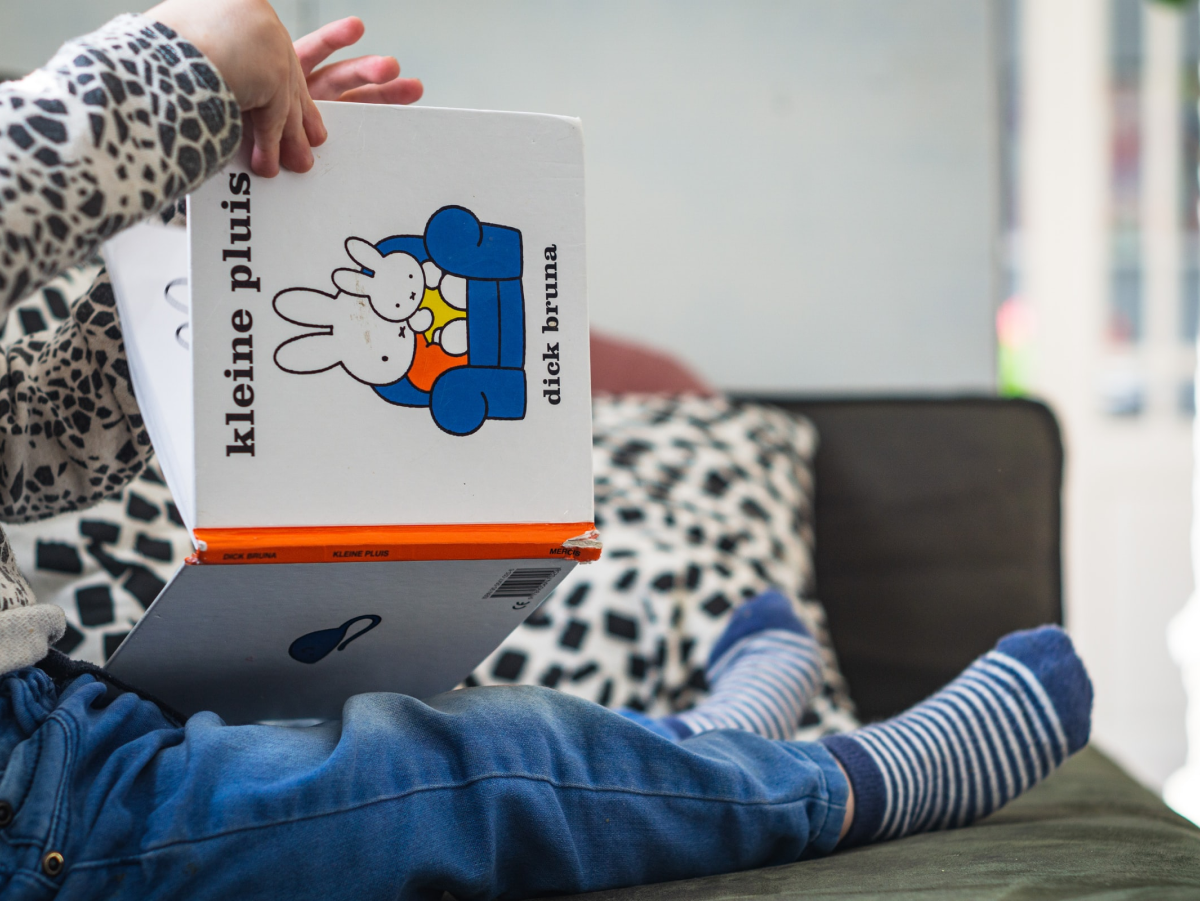
We received a room full of clothes and toys on our baby’s first after birth party.My husbandand I couldn’t be more thankful to our friends and relatives for being so thoughtful and generous.Thestock had almost everything that anew born would need. The overwhelming amount of clothes and supplies made us feel like half of the parenting needs are being taken care of.So, if you are lucky enough to be thrownone, baby showerscan help cash-strapped parents in many ways.
But kids growth is like that of weed’s,they justoutgrowclothes and shoes so often,making clothing an extremely expensive affair for parents. Once they outgrow their baby shower clothes, you may be shopping almost every two months or even more frequently if you live in an area with more dramatic climate changes.
Here are a few tips to get thrifty and save oncost for parents with growing toddlersto pre-school and schoolkids.
Age of discovering and learning
- Sew a patch: Toddlers to pre-schooling kids tend to explore more often,which means they will go out to play, fall down, dirty their clothes and sometimes even tear them apart. If you notice a hole on a trouseror has it started to wear down around knees, sew a patch into it. I use tough fabric like denim or corduroy. Also, it’s better to invest in tougher clothes that are meant just for play.
- Save the best ones: My baby’s second canvas is his clothes. When you know your kids will be doing a lot of painting and playing outside, send them inclothes that are more durable and whichyou don’t mind getting dirty. Save the best ones for ‘picture days’.
- Hand-me-downs: Our parentsmade us wear the hand-me-downs of elder siblings. The trend continues to be striving even today.The hand-me-downs from relatives, friends and acquaintances can be a great help especially for those parents who have to take care of more than one kid.
- Thrift stores:Thrift store is a big hit in most of the developed countries. However, the culture is yet to gain popularity in developing countries such as India. Thrift stores are basically shops with second-hand clothes which are well-maintained.
Though these stores started as non-profits to help the less privileged kids living off streets,today they are a big part of the reselling industry. You might not be convinced about purchasing used items but having kids who outgrow clothing so quickly,these shops which are chock full of barely used clothes in excellent condition, may become you favorite clothing destination.
School age
Once kids get into school their growth becomes steadyand clothing expenses shoot up. This is the age when they learn multiple skills, explore different opportunities and hone what they are best at and find passion in life.
I joined Karate classes when I was in Class IV. I wanted to be a champion who could show off her black belt but my parents weren’t sure about my new-born passion. They didn’t buy me a kit.My parents were right not to have bought a Karate kit for me as soon after I started practicing, my Karate trainer got transferred to another state. My short-lived love and passion for Karate gradually shifted to cricket. This time however, they bought me one from the season clearance sale.
It’s good for parents to be sceptical of kids’ when they are participating in extra curricularactivities. It is completely fair to wait and weigh the need to buy a kit or a costume that your kids demand.
Buy gender neutral items.
Buying versatile and gender neutral supply can also help you save costs.Think about multiple options while looking for clothes. Like the jackets which can be worn both ways. Or like the folding pants which can be resized.
Join online “Buy and Sell” groups
Organise a clothing swap. Swapand sell outgrown clothes with your neighbors, friends and relatives. You can also use apps such aseBay, Quicker and OLX which provides a discounted platform for well-maintained clothes.
The golden rule
How time flies! I remember how I hated it when my parents made me wear plus size dresses. And today I love purchasing one size up so my kid can wear it longer than just a month or two.Always buy a bigger size for toddlers growing up fast.
When is it worth to splurge?
It is definitely worth spending when it comes to shoes. No matter how fast your kids grow, you must get them the right fit. Forcing them to play and walk in misfit shoeswill not only deform their feet but it can cause them severe problems.
No doubt, shopping for kids is expensive and parenting is tough but that doesn’t mean you have to empty your pockets for brand-new items that will soon be outgrown after a couple of uses. A little creativity and a small planning can get you a long way towards saving money on various supplies. For instance, it can pay off big-time to sign up for your favorite kids’ retailer mailing list, as you get notified about coupons and special deals– things we royally ignore. My all-time favorite tip would be to make use of what we already have for saving some money.
Parenting is also about buying the right toys
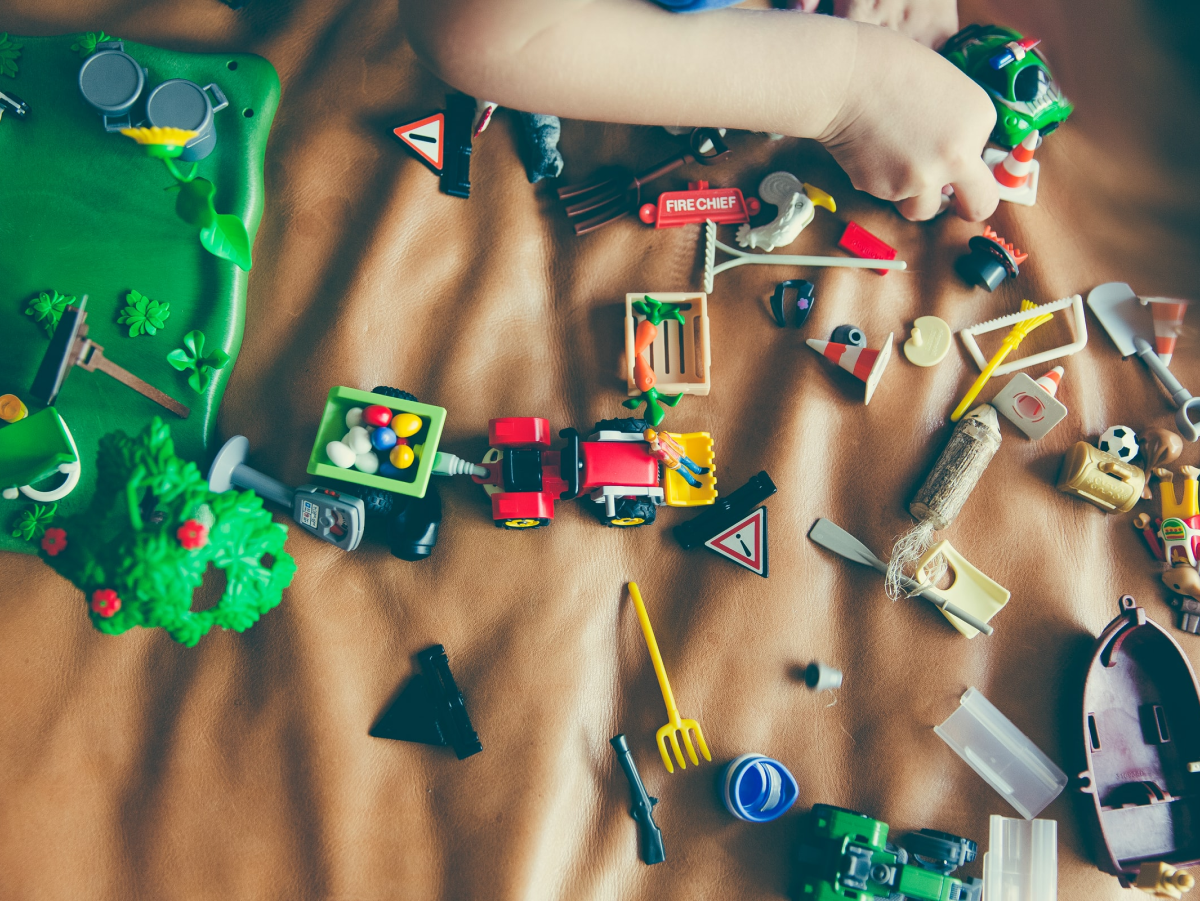
Introduction
It’s true that you will always be your child’s favourite toy, but you got to have backups because you can never match with your kid’s energy. Kids love toys. As simple as it may seem but getting a toy for your kid is no child’s play. Toys are more than just playthings. While they should be fun, they should also be age-appropriate, stimulating, and safe.
Here are a few tips for parents to buy the best toys for your kids:
Benefits of providing toys to children
The best toys engage a child’s senses, spark their imaginations, encourage them to interact with others, and improve his abilities to plan and organize.From peek-a-boo to pat-a-cake and hide-and-seek to hopscotch, the many forms of play enrichesthechild’s health and development.In addition, play helps with language, cognitive and social skills, and even helps kids cope with stress.
Ask questions before selecting a toy
Playtime is essential for kids of all ages. They need plenty of toys because they are learning and they need to keep learning. Having been able to buy the right toy from among the many choices can be very rewarding for both parents and kids. So before buying a toy ask yourself,
- Is the toy safe?
- Is the toy non-toxic?
- Is the toy too small?
- Is the toy easy to use?
- Does the toy have sharp edges or loose ties?
- Is the toy fun?
- Is the toy engaging and enticing?
- Is the toy versatile?
- Is the toy durable?
- Is the toy affordable?
- Is the toy rough and tough?
And so on..
Age-by-age toys
Birth to 12 months
For the first few months, your baby will mostly observe her surroundings. As she grows, she will enjoy toys that are designed to engage all her senses like toys making a squeaking or crinkling sound, having a nubby texture and being soft and cuddly. She will also tend to mouth toys to relieve teething pain.
Suggested toys:
- Rattles and teethers
- Activity mats
- Brightly colored toys
- Nursery mobile
- Unbreakable mirrors
- Soft toys
1-2 years
Now is the time for your baby to use her newly-acquired sensory-motorskills. She will be fascinated to play with toys that allow her to hit a ball with a hammer as well as toys with buttons that cause music to play or characters to pop up.
Suggested toys:
- Hammering sets
- Ring stack
- Push-pull toys
- Balls
- Rubber ducks or toy boats for bath time
- Shape-sorting toys
- Puzzles with four to five pieces
2-3 years
Her motor skills are finer now. She can now build with blocks, or complete a puzzle by herself. Kids are very active at this age. While they will continue to enjoy their push-and-pull toys, you can also introduce a ride-on toy.
Suggested toys:
- Dolls and stuffed animals
- Puzzles
- Ride-on toys and tricycles
- Props for make-believe play, such as toy telephone, a tea-party set, a toy kitchen, or a doll stroller
- Musical instruments
- Construction toys
- Large transportation toys with buttons to make a horn honk or a siren whistle
Keep them simple
Keeping up with growing kids and with their needs and demands, can drain you financially. Switch to DIY YouTube videos and I can promise you that you won’t be disappointed. You will get plenty of free, cheap and easy ideas to get creative and make toys from scratch, using cardboards and other discarded or used products. Other easier option could be organizing a toy swap where you can swap well-suited toys from your neighbors, friends and relatives. Read Get thrifty and save on cost for growing kids.
Like H. Jackson Brownputs it, “Give children toys that are powered by their imagination, not by batteries.” As kids grow, their relationship with toys change. In the process, let the motto of child being able to use his imagination while playing, remain intact. Make sure to avoid suchtoys that don't allow a child to use his own imagination. Dolls and soft toys that talk or sing or direct kids to press certain buttons essentially take charge of the play situation while it should be other way round. The best toys are often the simplest ones or in other words open-ended toys because they allow children to be creative and spontaneous. Open-ended toys and activities also stimulate creativity, sense of humor, sense of discovery, wonder, reasoning, social development, and much more.Some of the examples of open-ended toys are building blocks, dress-up accessories, animal figurines and hand puppets.
Let loose and teach your kids swimming
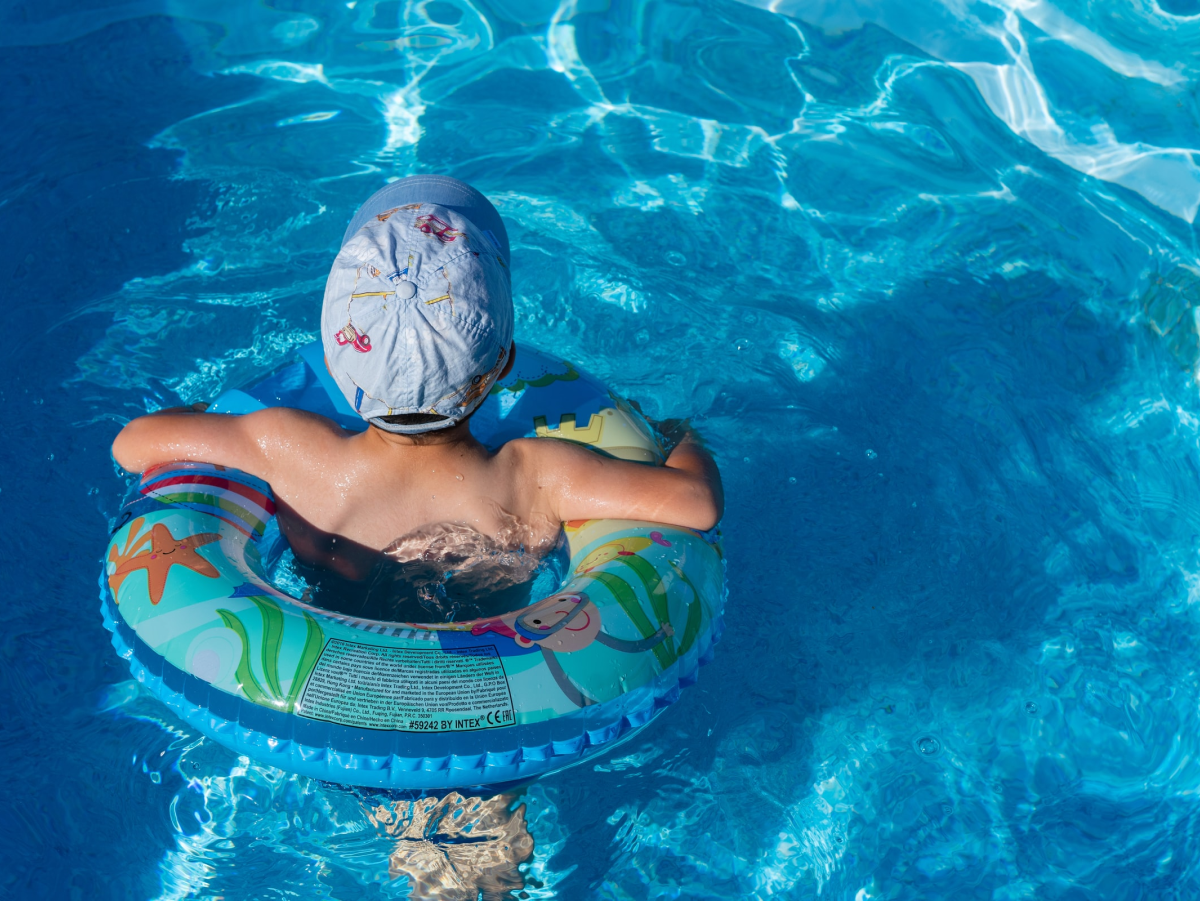
Did I leave the baby in the bath tub with the tap on? Did I leave the gate open? Did I get distracted? Oh! Did I just blink? Only a parent will understand the constant fear of safeguarding their kids from drowning.
Drowning is the 3rd leading cause of unintentional injury fatality world-wide. There are an estimated 3,60,000 annual drowning fatalitiesglobally. The Global report on drowning (2014) shows that in countries like Australia, Bangladesh, China, and the US, drowning is one of the most leading causes of fatalityin children aged 1-14 years.
Babies can learn to swim even before they can talk
The best time to get your little one in the water is any time after she reaches 3 months old.Medical research shows that a baby doesn't need to have completed the full immunisation course before you take your baby swimming.Some private baby swimming classes start as early as four weeks.
However, the American Academy of Pediatrics says that swimming lessons for kids for 1 year and up can be effective in preventing drowning. But they don’t support programmes for babies younger than that
Is it worth all the ‘torture’
How babies who can’t walk or talk can float? Doesn’t it look like a torture? Are they really swimming? Of course not! Baby at this young age are not development-ready to move themselves forward through the water. Instead, the goal here is to teach them to survive.
Eventually, five to six week of swimming lessons, when your baby starts jumping in, kicking in, and splashing water, all your doubts go hiding one by one. Sometimes it can be hard for parents to watch their kids go under water even in controlledenvironment.But imagine the happiness when you see your kid floating to the surface and began to swim.
Introducing your baby to water from an early age helps them avoid the traumatic experience that older children sometimes suffer around water.
Benefits
Accidents are bound to happen and you need to arm your children with abilities to save themselves.Getting your baby used to water from an early age is essential from a safety standpoint and it also provides a host of benefits for your little one.Ideally it takes a month for a kid to learn to survive in water.
Improves cognitive functions
A four-year study of more than 7,000 children by the Griffith University in Australia suggested children who swim have advances in physical and mental development when compared to their peers who don’t swim.
Improves Motor Skills
Being in a three-dimensional environment allows babies to execute a whole range of movements not possible on dry land, hence developing balance and coordination. Water also provides slight resistance that helps tone and strengthen your baby's muscles.
Boosts Mental Development
Getting kids in the water from an early age accelerates intellectual and emotional development. It also boosts kids' self-confidence and sense of accomplishment.
Strengthen Your Bond
Spending time enjoying the water with your baby helps you bond with your little one and creates valuable memories for both of you. It's also a great way to meet new mom and baby friends.
Needless to say that swimming also improves kids’ sleep and appetite.
Undivided attention
Kids can drown in seconds despite adults’ supervision. You might be risking your kid’s life if you believe that professional trainers are enough for defense.The first two defense lines are:
- Fencing the pool from inside.
- Constant supervision
What if those safeguards also fail and your kid slips in to the water? It is very important to choose those programmeswhich are entirely geared to prepare a baby for an emergency situation.
Plunging into cold water can be a shock to kids’ delicate system. One should aim to swim in water that’s around 89 degrees Fahrenheit.
Make it fun and safe experience
Before putting your baby in to the water to swim, there are plenty of activities like swings and dips which encourage your baby to spend a little bit of time in the water flat on their back. Breathing activity is other one where you train kids to breathe in above the water and breathe out under the water; the very natural way to swimming.
By 4-5 weeks, kid’s immune system is built up enough that he/she isn't at an increased risk for infection from any bacteria she could pick up in the water.Start off with quick 10-minute sessions and work up to 20 or 30 minutes. Swim with your baby once a week or more if possible.
Kids who are regular are quite guaranteed to ace the art in the pool.
The water survival skills for infants may make compelling videos for the internet but no scientific study has yet demonstrated that these classes are effective. A major concern about these classes is that they can give parents a false sense of security. Doctors are still finding out the data on the same.But if my kid does find himself suddenly under water, it won’t be the first time that he has to find his way back up. So, happy pooling!
Lockdown schedules for kids
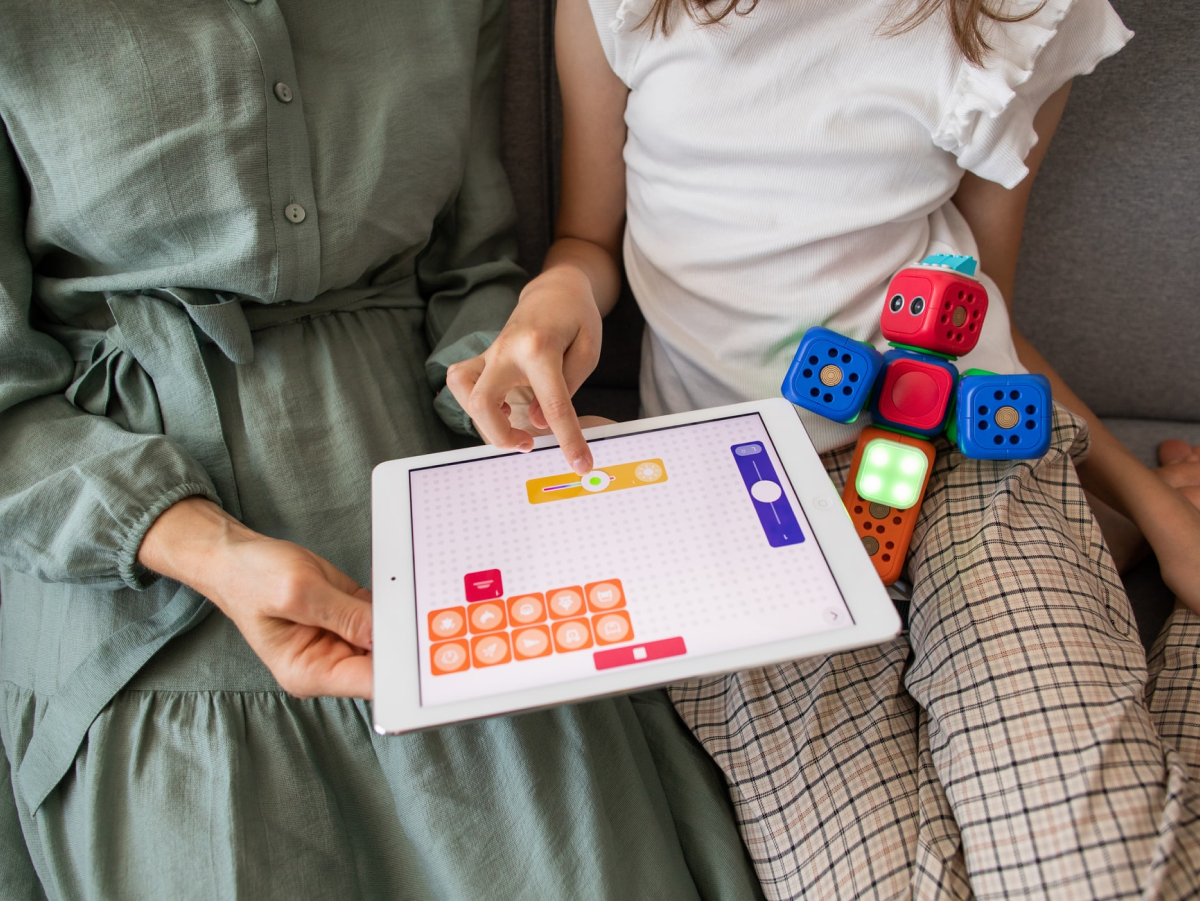
Isolation is time spent together – that’s what Covid lockdown has taught many families. Under the shadow of Covid-19, the lives of millions of children have temporarily shrunk to just their homes and screens. The early closure of schools means parents need to get more involved with their children’s teaching and learning.
Helping kids navigate through this new reality is both fun and challenging at the same time. Children get excited easily and bored more easily. They keep you ontoes.Besides the e-learning push, we feel sorry for thechildren spending so much time learning lessons and attending classes online.
My initial ideas and the experiments to help my kid stay abreast have failed. Making a tent, solving the puzzles and gardening didn’t seem to work as expected. Juggling between the spaces and the resources in the households got difficult for myself, my husband and our child. The reality is that, the stay-at-home orders have left us struggling without routine. The rhythm of life is thrown completely out of gear. But at last, creating a schedule for my family helped me a way to regain, in a small way of course, a sense of order and normalcy.
If you are wondering what to include in your daily routine, wonder no more. Below are some tips for managing your responsibilities and yet creating a useful lockdown schedule which can help you deal with daily changes together as a family.
Screen time certainly not the answer
We are living in an era where digital technology and its applications are spreading like mushrooms. While we were already dealing with kids’ screen timings, stay-at-home life has added fuel to the fire.
On one hand, online education is already set to become the new normal in a post-Covid world. While the efforts to ensure the academic calendar are rolled out and the school sessions remaining on track is inevitable, many experts differ on the impact of e-learning (Well, that’s another topic for discussion).This means that kids are bound to be glued to sceensat least for 4-5 hours every day.On other hand, the craze among kids for binge watching shows and playing online games has soared up.
One of the biggest disadvantages of digital indulgence is that the time we are missing out on other more beneficial activities. In short, parents can’t come out on the other side sane unless they have a planned routine for their kids.
Plan your weekly or daily schedule
Start with a rough sketch of your daily routine. I prefer to plan when we are relaxed, mostly after breakfast or dinner. It not only ensures that the kid is aware of what is expected of him but also allows him an opportunity to have a say in the order of activities.This will also help you reduce the likelihood of disagreements since you can divide the use of spaces and resources among all family members.
Pictures are always a great choice for me when it comes to dealing with parenthood. Using pictures, we made a schedule for my child. It is broadly divided into morning exercises, academic and family time.
Here is the list of activities we included during the academic slot.
- E-learning (major screen timing)
- Solving puzzles
- Shadow drawing
- Hopscotch
- Rubik’s cube
- Spot the difference
- Painting
- Calligraphy
- Learning a language
- Online coding
- Reading comics
Here is the list of activities we included during family time.
- Cooking
- Dancing
- Gardening
- Badminton
- Swimming
- Indoor picnic
- Travel around the world – digital tour
- Chess
- Snake and ladder
- Carom
- Set up a treasure hunt
- Tenting
- Chores like laundry, cleaning
Breathing space and the clock
Mixing fun activities with academics is a deliberate choice. You would like your children to relax in between tasks, hence keeping a track of time is also important. It can vary from family to family. You can either call for a snack break, or allow your kid to doodle or listen to music. It’s been more than a month now, and setting an alarm seems to be the best reminder that we are on track. Someday, we just snooze in between. On other days, we continue doing what we enjoy the most and don’t mind the alarm. We are flexible that way. :D
Let me be honest, things did go wrong. We had our share of arguments and meltdowns. You will havemore if you are blessed with more than one kid. Acknowledgingthe child that we hear your needs, and explaining why this need may not be met right now, helps. Create a final list of agreed upon boundaries, and post them with the schedule as a visual reminder to everyone.
Somewhere we were mistaken between regular weekend plans and life during the lockdown.When I look back at days when we were just trying to keep ourselves occupied and now after we started scheduling family daily routines, it makes a lot of difference. Besides waiting for the lockdown to end, we have also started looking forward to our days more relaxed and composed because we now know what to expect from the day. So, let’s make the best of isolation and look forward to the day when our lives would get back to the earlier routine.
How to engage kids during lockdown
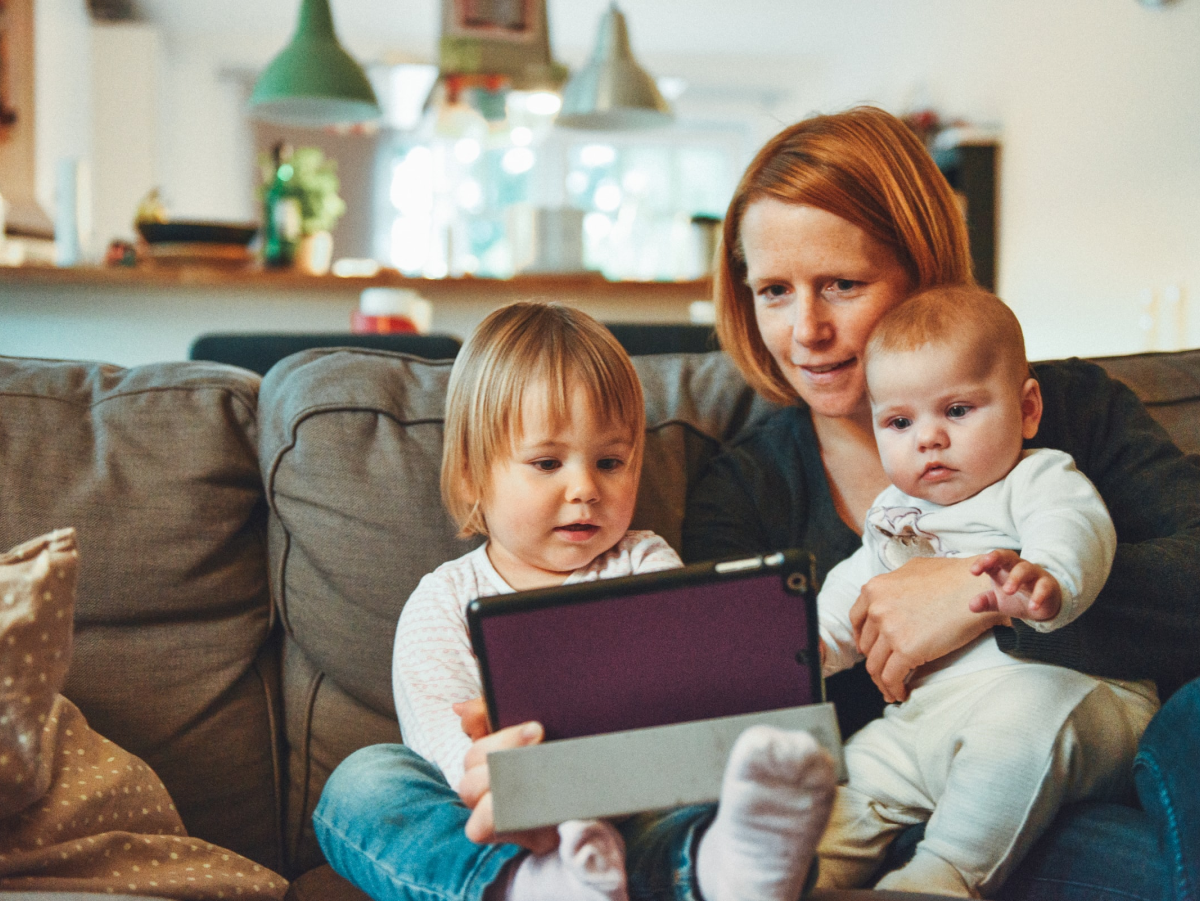
I had almost forgotten the sight of kids playing on terraceonly until this lockdown. From an aspiring singer to a karate kid, from a poet to abatsman, I never knew that I am surrounded by such a talented bunch. The lockdown may seem to have restricted children to four walls and terraces but it couldn’t dampen their spirit. And this is where life throws yet another challenge to parents.
Parents are juggling between work and parenting dutieslike never before. Adjustingyour work-from-home setup from sofa to breakfast table and simultaneouslymaking sure that your children are engaged and entertained is a complex task. Here are some tips toengage kids during lockdown.
Talk to your kids
Just before the lockdown, my husband and I had promised our kid, a trip. He refused to believe us until we almost risked our lives and took him out for a stroll. Only the eerie and deserted look of the roads could convince him that his parents cancelled the trip for a reason. We were surprised to see him comply with us.
It is very important to explain clearly to your kids about the need to stay indoors. If you are able to convince your kids that this too shall pass, then half of your problem is solved.
Compose yourself
With their routine days gone, children will find it hard to suddenly have mum and dad as teachers. And many parents will be trying to control the urge of screaming at them. It’s quite tough teaching your own kids because they won’t listen to you, and you would have no tolerance or patience. So, it’s very important to keep your calm and practice before you preach.
Make a routine
Kids need to understand that lockdown is not an extended vacation. They can’t just play, sleep and eat according to their whims and fancies. While they are idle at home, their parents are not. For them it would be as good as playing with parents during weekends. Attending to calls, and replying to emails will be interrupted, no doubt.
Neither yours nor your kids’ routine can take a back seat. So, make a new routine keeping your kids’ activities in mind. Tell them they can’t have special demands.
In case of toddlers, the rule remains the same – make most of the nap time. Spilt responsibilities among each other. I attend to my kid during the first half of the day, while my husband does during the second half.
Nurture a hobby
It’s now or never. This quarantine is the best time to help our babies recognize what they are good at and work towards them. This will not only engage your kids but can be a source of fun learning also. Practice and teach yoga to improve their over-all health or help them cook their favorite dish. You can teach and learn a new language with your kid. Dig into your cupboards and bring out all out-grown games and toys. Help them paint or sing a new song on piano. How about asking them to pitch in with household chores?
My kid has been keeping himself busy with writing letters. He also makes clay crafts and helps me with gardening over weekends.
Limit screen time
Schools are shut.From classroom teaching to Cult.fit exercises, everything has been digitalized. Kids can’t do away with screen time completely. Therefore, we must come to terms with kids regarding gadget time. And just in case, they are too bored and want to use a gadget, make sure you have them enrolled for an online course. They are plenty of them available.
As we all eagerly wait for the lockdown to come to an end, deep down we all know and wish that it doesn’t last for long.So, let’s bond over quarantine, stay positive and safe. It’s beautiful to see kids and birds come out of their nests adding life and hope to the lingering standstill.
Momcation –A Temporary Escape

During my flight, which lasted for not more than two hours, I have read half of an entire book thatI’ve been trying to for months.I managed to take a 15-minute nap which was not just the soundest but also felt like forever. I was drooling away to glory. Those who are wondering why I am hyping a typical journeylet me remind you that I am a mother and I had just returned from my “momcation”.
Yes, you read it right. For those who are yet to discover the sassy buzzword, don’t worry.But before we talk about “momcation”, let me take you on a brief tourof how life looks, ever since you become a mother.
From the biggest day when you got to know about your pregnancy and the time you took to sink in, when you started to feel the hormonal imbalancesliving in the fear of “what if” till the unmatched happiness when you first saw your baby, life has been a roller coaster.
A few months of maternity leave and life was back to square one, except that I am also a mother now. Juggling between office and behind-the-scenes labor of managing family: scheduling pediatrician appointments, keeping track of growth, cutting and filing nails, answering to redundant and the never-ending questions, attending to second-to-second curiosity, remembering when was the last time my baby pooped, to packing healthy-yet-colourful lunch boxes, to taking them for swimming classes, attending parent-teacher meets, helping them with drawing, reminding them to put their toys back in boxes, I had a sudden realization. I can see my uptightness slip away. I need a break. Period.
So, in simple words “momcation” means a temporary escape from the day-to-day grind.It is anything that a mother does when she is on a “break”.I would not get into the technicality of it, for the definition can vary from mother to mother. I would leave it to you to decide and coin your own term. In the end, it would all mean self-care and self-love.Like, for my neighbor, it is about going to her mother’s place all alone. For a friend of mine, momcation is,she being able to take a trip to the nearest beach, admire the sunrise and the sunset, and lay by the beachall alone.
I wasn’t asking who needed to pee. I wasn’t asking anyone to keep their shoes in place. I wasn’t telling anyone to take their mouth off the same rug our pet had peed on. Oh, that was surreal and that’s how I define my momcation.
I tried to break down my “momcation”experience in the following points.
- A strong “substitute”: It is not possible to just leave your kids home alone and enjoy by yourself. You need a back-up of whom you can completely rely on, to look after your kids. The dynamics of the family shifts a bit when the parents are gone. I noticed that my absence providesmy family a chance to bond with each other. My baby learnt that even his father can cook well and sings lullaby. He also found out that his grandmother snores. My kid experienced daily life in a different way, which sparks new discoveries and learning. While it was eye-opening for my husband to wrestle it all for a bit, my perspective towards my kid changed. He sounded like a grown-up who tried hard to control his stammering.
- Be a guilt-free mom: There’s a very thin line between selfishness and self-love. There is so much guilt and pressure that comes with being a mom. In our society, especially in India, “momcation” is still like a forbidden fantasy. “How can you even imagine that?” is the most-likely response a mother can expect. But don’t let your inner voice get blurred by the guilt and pressure. I needed my family and friends to tell me it was okay to leave for 24 hours and to focus on myself.
- The gap: While I was binge watching and relishingevery bite of my favorite pakodas, I made sure nothing else cross my thoughts. But the sunset had me. I slipped into a deep self-talk. What about the mothers who are left out entirely. Some of us can manage our finance but there are low-income moms and single moms who are least likely to have access to paid vacation days, and they don’t necessarily have other folks to rely on to take over when they need a break.Hushing away mixed voicesin my mind, I told myself all we need is a realization that “me time” isn’t about resources but a strong belief.
- The catch: “Momcation” is creating buzz of late. Mothers are taking to social media platforms with the hashtag momcation and sharing what refreshing time they had, either all by themselves, or with a group of mothers. There are blogs lining up. But if we look closely, the trend leads to an interrogation of the reasons why women so desperately need a reprieve in the first place. Studies stress that it is very important not just for the moms to take a break but also to the kids for their growth and it is absolutely okay to leave your kid alone in a secure location.
Home coming was never like before. Somewhere between changing unlimited numbers of diapers, sleepless nights and endless snack requests, a little break helped me regain the woman who got lost in the melee of motherhood. Nothing could match my soulfulness. I am a more patient and a caring mother now. As they hug me, I could feel unparallel love, belongingness and importance that my absence created in disguise.
For those in the dilemma of “should or should not”, then tuck the idea away in your head and come back to my blog whenever ready.And to the Momas, who are decided to take a pause from the hubbub of life and ready to roll, happy momcation. Just remember you are the backbone of your family, so before you break, take a break.